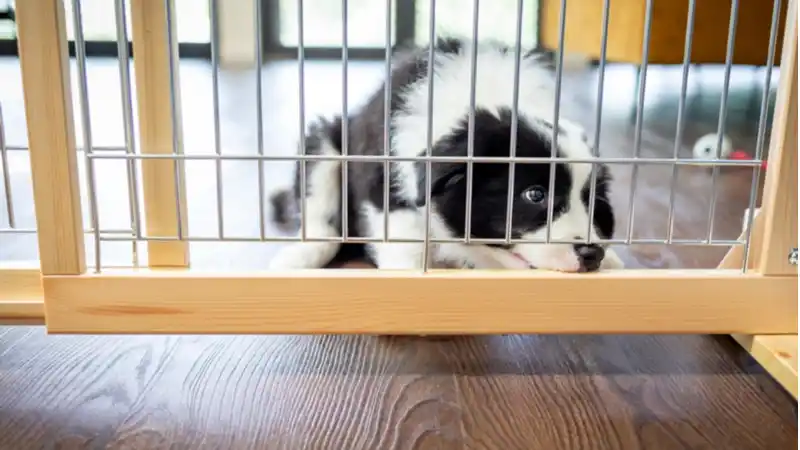How Much Playtime Do Dogs and Cats Need?
Different breeds, ages, and animals will need different playtime routines. We recommend the amount of playtime your pet needs based on life stage, health, and more.

Keeping your pet happy and healthy means providing enough playtime, but how much is enough? In this guide, we'll uncover the factors that affect playtime for dogs and cats and examine the needs of different life stages. Plus, we'll share some helpful tips for engaging play sessions.
From understanding breed-specific differences to accommodating pets with special health needs, we've got you covered. So, let's dive in and learn how to make your pet's playtime enjoyable, stimulating, and tailored to their specific needs.
What Factors Affect How Much Playtime Dogs and Cats Need?
The amount of playtime your dog or cat needs will depend on several different factors. Let's take a look at a few of the most important:
Age
Puppies and kittens have different playtime requirements than adult or senior pets. Their developing bodies and minds require frequent, short play sessions for proper growth and socialization.
As your pet grows older, their playtime needs will change, so it's crucial to adjust the duration and intensity of play accordingly to maintain optimal physical and mental well-being.
Breed
Some dog and cat breeds are more energetic than others. For example, high-energy dog breeds like Border Collies and Australian Shepherds typically need more playtime than less active breeds like Bulldogs or Basset Hounds.
Similarly, among cats, breeds such as Siamese and Bengal cats are generally more playful and energetic than Persians or Ragdolls. Understanding your pet's breed characteristics can help you plan appropriate playtime activities and duration to meet their specific needs.
Pet Health
Pets with health issues or physical limitations may have different playtime needs. For example, a dog with hip dysplasia or a cat with arthritis might require modified activities and shorter play sessions to avoid exacerbating their condition.
Consult your veterinarian for personalized advice on how to adjust playtime for your pet's specific health circumstances, and always monitor their behavior during play to ensure they remain comfortable and engaged.

Every Dog and Cat Deserves the Pet Insurance of Champions
Get prize-winning care for your pets.
Individual Personality and Preferences
Every pet is unique, so it's important to observe your dog or cat and adjust playtime according to their energy levels and interests.
Some pets might prefer chasing toys and engaging in high-energy activities, while others might enjoy more relaxed playtime, such as gentle wrestling or interactive puzzle toys. Pay attention to your pet's preferences and energy levels, and tailor their playtime to provide a satisfying and enjoyable experience.
Recommended Playtime for Dogs
Earlier, we mentioned that puppies have different playtime needs than adult dogs. Let's take a closer look at the specific requirements for each life stage:
Puppies
Puppies need frequent, short play sessions throughout the day to encourage proper growth, development, and socialization. The exact amount of playtime will vary depending on the puppy's breed, size, age, and individual energy levels. As a general guideline, the 5-minute rule can be followed for exercise, which recommends 5 minutes of exercise per month of age, twice daily.
Puppy playtime should focus on positive experiences, exploration, and interactions with other dogs and humans. Gradually increase the duration and intensity of play as your puppy grows, ensuring that playtime remains safe, engaging, and age-appropriate.
Adult Dogs
In general, adult dogs need around 30-90 minutes of daily physical activity, which can include both playtime and walks. The exact amount varies depending on your dog's breed, age, health, and energy level.
Active breeds may require longer play sessions or more vigorous activities, while less active breeds might be content with shorter playtimes or more low-key activities. Monitor your dog's behavior and adjust playtime accordingly to meet their individual needs and maintain their physical and mental health.
Senior Dogs
Older dogs still need regular playtime, but the intensity and duration of activities should be adjusted to accommodate age-related changes in energy levels and physical capabilities.
Focus on low-impact activities and shorter play sessions, ensuring that your senior dog remains comfortable and engaged without overexerting themselves. Regular playtime can help keep your senior dog mentally stimulated and maintain their overall well-being, so it's essential to continue providing age-appropriate play activities even as your pet ages.
Recommended Playtime for Cats
Wondering how much playtime your kitty needs? Let's take a look at the general guidelines for cats of different life stages:
Kittens
Just like puppies, kittens need frequent, short play sessions throughout the day. Offer various toys and activities, such as feather teasers, crinkly balls, and climbing structures. This is a great way to help your kitten learn, grow, and develop their motor skills and hunting instincts.
As they get older, gradually increase the intensity and duration of play sessions, while still maintaining age-appropriate safety precautions.
Adult Cats
Cats typically need around 30 minutes of daily exercise. This can be split into shorter play sessions throughout the day to accommodate your cat's natural activity patterns.
Incorporate a mix of interactive and solo play to stimulate your cat both mentally and physically and provide opportunities for them to express their natural hunting and stalking behaviors. Use toys that mimic prey, such as feather teasers, laser pointers, and toy mice, to engage your cat's instincts and keep them entertained.
Senior Cats
Older cats still benefit from regular play, but adjust the intensity and duration of activities to accommodate their changing needs and potential physical limitations.
Offer gentle play options, such as soft toys or slow-moving teasers, and avoid overexerting your senior cat. Monitor their behavior and comfort levels during play and make any necessary adjustments to ensure your aging cat stays engaged, happy, and healthy.
5 Tips for Effective Playtime
No matter whether you have a puppy, kitten, adult, or senior pet, there are some key tips to remember when it comes to providing effective and enjoyable playtime:
1. Choose Appropriate Toys and Activities
Choose appropriate toys and activities for your pet's age, breed, and interests. Experiment with a variety of toys to discover what engages your pet the most, and rotate toys regularly to maintain novelty and excitement.
2. Engage in a Mix of Interactive and Solo Play
Engage in a mix of interactive play (involving you) and solo play (allowing your pet to play independently). Interactive play helps strengthen the bond between you and your pet, while solo play allows your pet to entertain themselves when you're not available for playtime.
3. Establish a Consistent Playtime Routine
Establish a consistent playtime routine to help your pet anticipate and look forward to daily play sessions. By setting aside specific times each day for play, you can help establish healthy habits, reduce boredom, and minimize destructive behaviors that might result from pent-up energy or frustration.
4. Balance Playtime with Rest and Relaxation
Balance playtime with rest and relaxation to ensure your pet's overall well-being. Pets need downtime to recharge and recuperate, just like humans. Provide your pet with comfortable resting areas and quiet spaces where they can relax and recover from play sessions.
5. Monitor Your Pet's Response to Playtime
Monitor your pet's response to playtime and adjust the duration, frequency, or intensity of activities as needed. Pay attention to signs of overexertion or disinterest and make any necessary adjustments to ensure your pet remains engaged and enjoys their playtime experiences.
Are You Maximizing the Benefits of Playtime for Your Pet?
Understanding your dog or cat's unique playtime needs is essential for their overall well-being. As we've seen, factors such as age, breed, health, and individual personality all play a role in determining how much playtime is ideal for your pet.
Remember to always monitor your pet's response to playtime and make any necessary adjustments along the way. By keeping a close eye on your pet's preferences and energy levels, you can create a strong bond and a fulfilling playtime experience for both of you.
And, as always, consult with your veterinarian for any questions or concerns about your pet's health and well-being. Happy playing!
Focus on the fun without worrying about the what-ifs with AKC Pet Insurance (underwritten by Independence American Insurance Company). Accident & Illness Coverage through AKCPI offers reimbursement for eligible costs related to common cat and dog emergencies like digestive issues, broken bones, and toxin ingestion*.

Every Dog and Cat Deserves the Pet Insurance of Champions
Get prize-winning care for your pets.
*Foreign body ingestion, dogfights, and toxin ingestion are only covered once during the lifetime of a pet. See your policy for additional details.

Richard has shared his life with pets since childhood, and currently has a rescue cat and dog. He works with veterinarians and pet businesses to improve their content. To find out more, please visit his [website](https://richardrowlands.com/).
READ MORE ARTICLES

